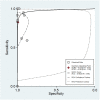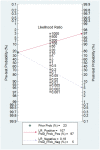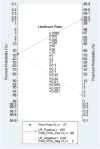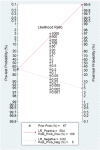Diagnostic Performance of Two-Dimensional Ultrasound, Two-Dimensional Sonohysterography and Three-Dimensional Ultrasound in the Diagnosis of Septate Uterus-A Systematic Review and Meta-Analysis
- PMID: 36832295
- PMCID: PMC9955687
- DOI: 10.3390/diagnostics13040807
Diagnostic Performance of Two-Dimensional Ultrasound, Two-Dimensional Sonohysterography and Three-Dimensional Ultrasound in the Diagnosis of Septate Uterus-A Systematic Review and Meta-Analysis
Abstract
Background: The septate uterus is the most common congenital uterine anomaly, and hysteroscopy is the gold standard for diagnosing it. The goal of this meta-analysis is to perform a pooled analysis of the diagnostic performance of two-dimensional transvaginal ultrasonography, two-dimensional transvaginal sonohysterography, three-dimensional transvaginal ultrasound, and three-dimensional transvaginal sonohysterography for the diagnosis of the septate uterus.
Methods: Studies published between 1990 and 2022 were searched in PubMed, Scopus, and Web of Science. From 897 citations, we selected eighteen studies to include in this meta-analysis.
Results: The mean prevalence of uterine septum in this meta-analysis was 27.8%. Pooled sensitivity and specificity were 83% and 99% for two-dimensional transvaginal ultrasonography (ten studies), 94% and 100% for two-dimensional transvaginal sonohysterography (eight studies), and 98% and 100% for three-dimensional transvaginal ultrasound (seven articles), respectively. The diagnostic accuracy of three-dimensional transvaginal sonohysterography was only described in two studies, and we did not calculate the pooled sensitivity and specificity for this method.
Conclusion: Three-dimensional transvaginal ultrasound has the best performance capacity for the diagnosis of the septate uterus.
Keywords: mullerian anomalies; septate uterus; sonohysterography; ultrasound.
Conflict of interest statement
The authors declare no conflict of interest.
Figures













References
Publication types
LinkOut - more resources
Full Text Sources
Medical

